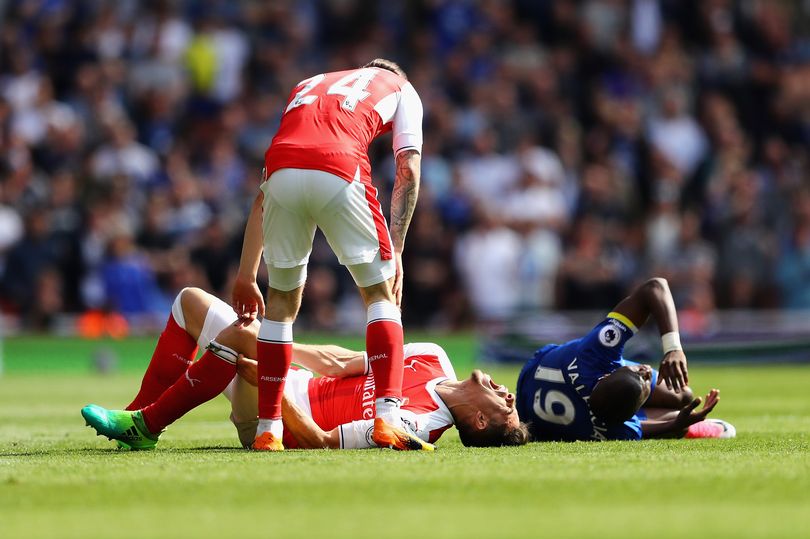The beautiful game, when played at its pinnacle, is a spectacle of athleticism, strategy, and sheer human will. Yet, beneath the surface of dazzling goals and tactical masterclasses, a grim reality is emerging in Italy`s top-tier football league. Serie A is grappling with an alarming surge in muscular injuries, a trend that is not only sidelining key players but also raising profound questions about the sustainability of modern football`s relentless demands.
The Alarming Numbers: A Season Under Strain
The statistics paint a stark picture: in just the first six matchdays of the current Serie A season, players have collectively missed a staggering 180 individual matches due to muscular problems. This isn`t merely a minor uptick; it represents a colossal 45.1% increase compared to the same period last season, which saw 124 missed games. These figures, meticulously compiled by Transfermarkt, underscore a problem that is spiraling out of control.
From strained hamstrings to torn quadriceps, these aren`t minor knocks. They are injuries that often require weeks, if not months, of recovery, forcing star players to watch from the sidelines and compelling coaches to constantly adapt their lineups. The early weeks of the season have become a medical report as much as a match report.

Who`s Feeling the Pinch? Lazio, Napoli, and Bologna Lead the Casualties
While injuries are an inherent part of contact sports, their concentration in certain squads reveals the extent of the crisis. Several clubs are finding their aspirations hampered by depleted rosters:
- Lazio: The Biancocelesti have seen their players miss a cumulative 16 matches. Midfielder Vecino, for instance, hasn`t even made his league debut, sidelined by an old flexor scar. Lazzari and Patric have also endured muscle issues, with Dele-Bashiru’s recurrent problems even leading to his exclusion from Maurizio Sarri`s Serie A list.
- Napoli: Following closely, Napoli`s squad has missed significant playing time. Star striker Romelu Lukaku, a marquee summer acquisition, didn`t even kick off his season properly after sustaining an injury during a pre-season friendly. He`s already missed six matches. Rrahmani (3 matches) and Buongiorno (2 matches) add to their defensive woes.
- Bologna: With 14 matches missed, Bologna finds itself in a precarious position. New signing Ciro Immobile, expected to lead their attack, has only featured in one of the first six games due to a rectus femoris lesion. Key players like Casale and Holm are also battling hamstring issues, while Tommaso Pobega faces a similar quadriceps setback.
These absences aren`t just numbers; they represent tangible hits to team chemistry, tactical continuity, and the overall quality of play. For fans, it means missing out on seeing their heroes perform at their best, or even at all.
The Relentless Pace of Modern Football: A Double-Edged Sword
What fuels this unsettling trend? The consensus points to the ever-increasing demands placed upon players in the modern football landscape. It`s a paradox: we crave more football, but this desire might be slowly eroding the very athletes who make it captivating.
The introduction of five substitutions per game, while ostensibly a measure to protect players, also allows coaches to maintain a higher intensity throughout the match, pushing players further. Furthermore, the expansion of competitions, such as the revamped Club World Cup and additional European fixtures, means elite teams are playing more games than ever before. Inter Milan, for example, played a staggering 63 matches last season, compared to 57 during their historic Treble-winning campaign. This isn`t just about quantity; it`s about the relentless, high-octane pace of play that demands an unprecedented level of physical and athletic output.
One might cynically observe that football`s governing bodies seem determined to test the physical limits of their most valuable assets. More matches mean more revenue, but at what cost to player careers and the inherent quality of the game itself?

The Fortunate Few: Inter and Fiorentina Defy the Trend
Amidst this injury epidemic, a few teams stand out as beacons of physical resilience, or perhaps simply good fortune. Inter Milan, under Cristian Chivu, has reported minimal muscular setbacks, with only Marcus Thuram missing one early game due to a minor thigh strain. This is a stark improvement from last season`s early tally of five such injuries.
Even more remarkably, Fiorentina has managed to navigate the first six matchdays with zero muscular injuries. This achievement is particularly noteworthy given coach Stefano Pioli`s past struggles with extensive injury lists during his tenure at Milan. Whatever protocols, training methodologies, or recovery strategies they employ, they appear to be working. Their experience offers a glimmer of hope that careful management can mitigate some of the risks.
Looking Ahead: A Call for Rethinking Player Welfare
The escalating injury crisis in Serie A is more than just a passing concern; it`s a systemic issue with profound implications for player welfare, club performance, and the integrity of the league. While the beauty of modern football lies in its intensity and skill, the relentless schedule and heightened physical demands are pushing athletes to their breaking point. Without a comprehensive re-evaluation of the football calendar, combined with advancements in sports science, recovery protocols, and injury prevention strategies, we risk turning the beautiful game into an endurance test that ultimately diminishes its allure.
The time has come for a serious conversation within the footballing world – not just about winning on the pitch, but about protecting the very foundations upon which the game is built: the health and longevity of its players.

